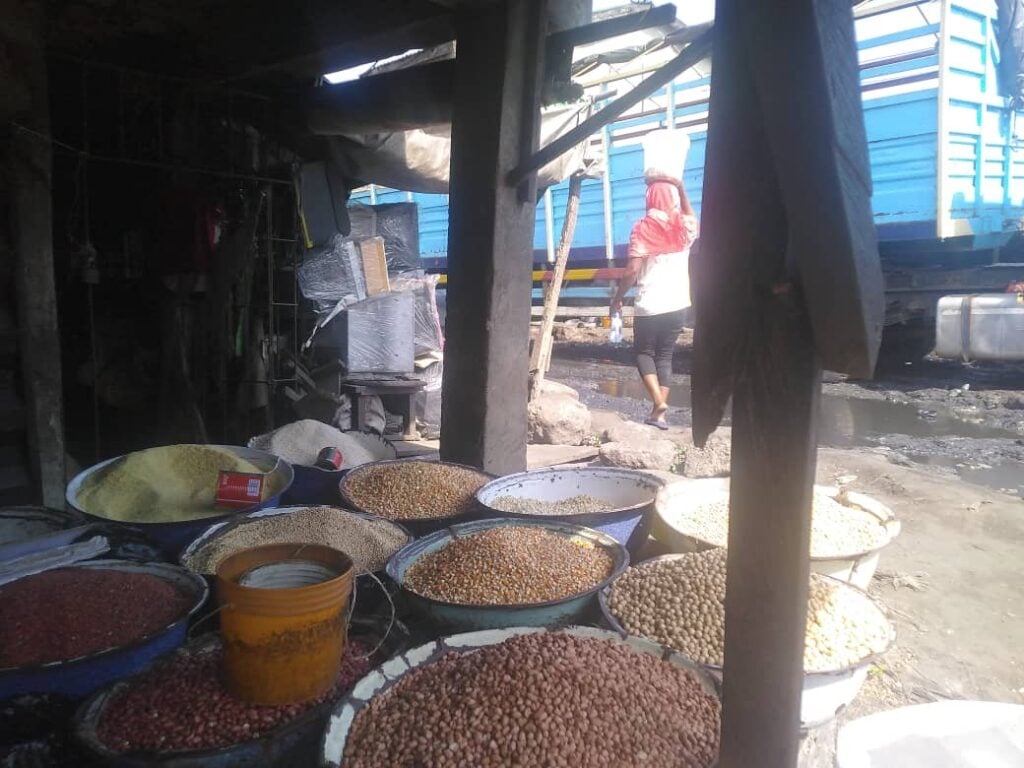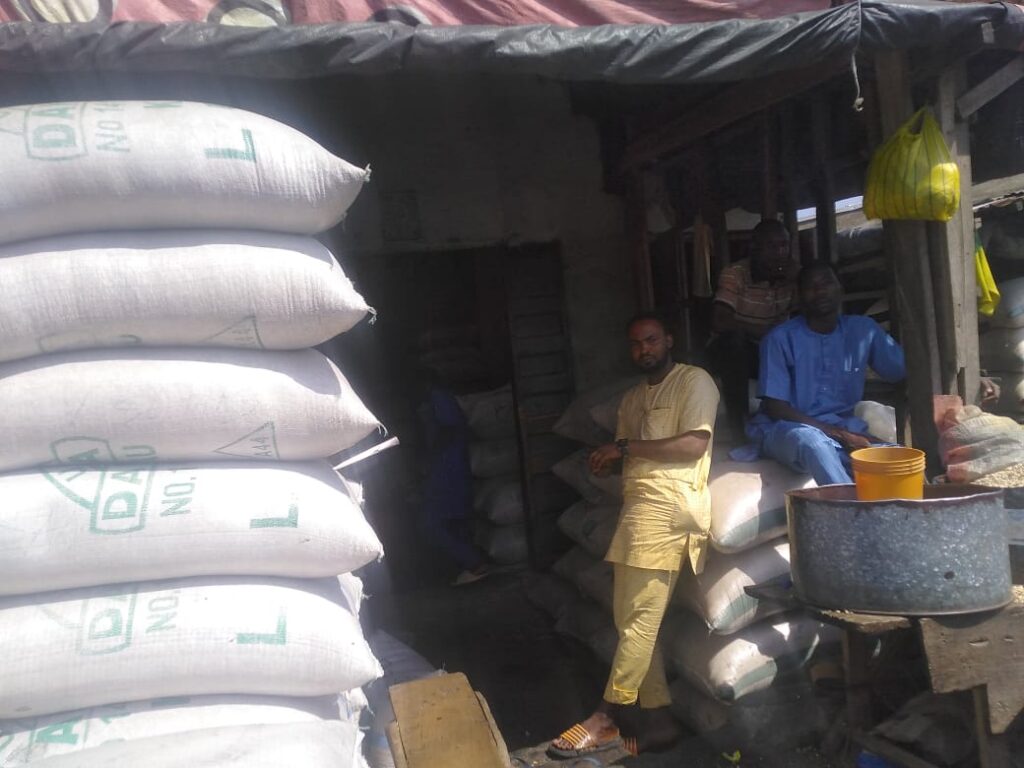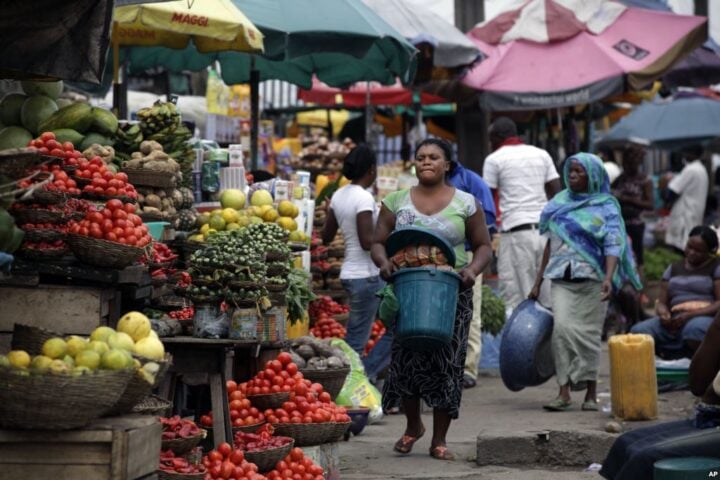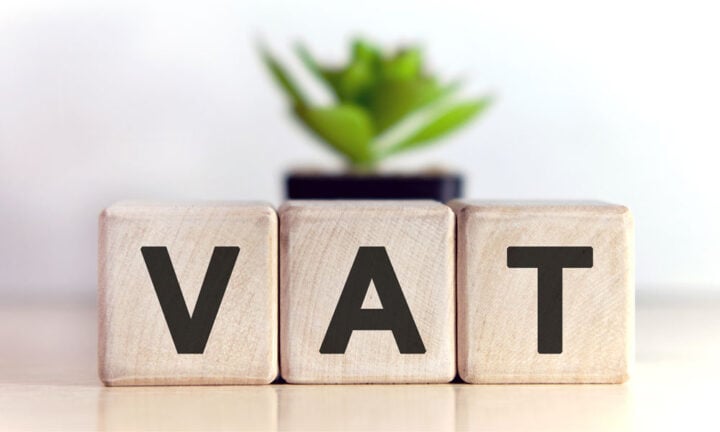The prices of food items continue to soar across major markets in Lagos, as traders complained of low sales amid declining purchasing power.
This is according to a market survey conducted by TheCable.
Recently, the Food and Agricultural Organisation (FAO) warned that global import bills could reach record levels in 2021 — a 14 percent jump from the 2020 record.
The food outlook report said the spike in global food prices would weigh heavier on the side of low-income countries like Nigeria.
Advertisement
Joseph Aleekwe, an elderly trader, who started his business with N7000 in the 1990s at the Alaba Rago market, Lagos, reminisced on “good old days” when he started trading.
“I started my business with N7000. I rented a shop and stocked my shop with food items with that amount of money,” he said.
“But today, N7000 cannot even buy a bag of wheat.”
Advertisement
Aleekwe’s claim was correct as the price of a bag of wheat now sells at N17,000, a 21.43 percent jump from N14,000 previous months.
PRICES INCREASE EVERY DAY – TRADERS
For traders at the popular Iyana Iba market, most prices of food items have escalated in the last few months, thereby diminishing purchasing power with them witnessing low sales return.
“The prices of items increase every day. If you come to the market tomorrow, you will not get the same price you will get today,” some of the traders said.
Advertisement
“We don’t know what will happen as we are entering a festive season now. For most of us, we are even looking at how to get more money to buy items and sell during the season.”
EGG JUMPED BY 67%, RICE 20%
The price of local rice (50 kilogrammes), which used to be N20,000 in the first half of the year — rising by 15 percent — increased to N23,000.
Foreign-made rice (50kg), on the other hand, surged from N25,000 in the first half of the year to N30,000, signifying a 20 percent increase.
Advertisement

Also, vegetable oil (25 litres) had a market price of N23,000 but increased to N25,000, up by 8.7 percent.
A crate of medium-sized eggs jumped from N1200 to N2000, year-on-year, representing a 67 percent increase.
Advertisement
A big basket of tomatoes was N19,000, with a small basket traded for N4500. A 10kg size of semo went from N4800 to N5300, while a bag of corn that used to be between N8000 and N9000 doubled its price to about N19,000 and N22,000.
A loaf of bread also recorded an increase in price from N350 last year to N500 in 2021. A bag of garri was purchased at N12,500 — increasing by 4% — from N12,000 recorded in the same month, the previous year.
Advertisement
A bag of groundnuts increased from N48,000 in October to N52,000 in November.
A carton of croaker fish is now N30,000, and a medium-sized frozen chicken (full) rose from N1,700 in October and N1,500 in November 2020 to N2,000 in November.
Advertisement
COST OF BEANS DROPPED
A bag of brown beans — was 80,000 in October — decreased to N65,000, representing 18.75 percent drop. Despite the fall, the price represented a 62.50 percent surge compared to November 2020, when the price was N40,000.
The selling price of a bag of white beans also decreased by 0.08 percent from N60,000 in October to N55,000 in November. It was 30.95 percent higher than the purchasing price of N42,000 in the preceding year.
Also, one derica of beans (four tins) fell from N700 to about N550.
Shansu Salisumukhtar, a trader at Alaba Rago market, told TheCable that the decline in the prices — after it soared to N100,000 earlier in the year — could be attributed to the inflow of newly-harvested beans into Nigerian markets.
“New beans is in the market… that is why the price is going down,” he said.

WHY FOOD PRICES ARE INCREASING
In August, SBM Intelligence, a geopolitical research firm, said that decreased local production in the agricultural sector and high exchange rates were indices pushing the prices higher.
Micheal Oguremi, fixed income analyst, Chapel Hill Denham, told TheCable that insecurity and the COVID-19 pandemic are instigators of higher food commodities.
Ogunremi said the Central Bank of Nigeria (CBN) had risen to the occasion in terms of financing and input supports.
“There’s been improvement in terms of financing. CBN has been doing quite well,” he said.
“But you will look at the level of insecurity which has affected transportation of food, farmers have been killed and all of that. You also consider the impact of Covid-19 on the agricultural value chain so far.
“There’s quite a lot of disruption in the agricultural sector.
“When you put all of these together, you will then understand why we have these escalating prices.”
Ogunremi said that Nigeria is not producing enough domestically and that until the underlying issues causing dwindling agricultural production in Nigeria are dealt with, food prices will keep rising.
“If we still have a low level of production, you would not see any major impact, whether next year or two years to come or three years to come,” he added.
“The situation would then be that food prices will come down when we have certain factors happening at the same time.
“The factors would be around more financing in the agric sector, improvement in security, access to the dollar at a much more affordable rate for the price of food items.
“And if we are able to beat the effect of climate change on the agricultural production in Nigeria, we can see all these things happening at the same time, then I can say that results can equate the plans.”
FOOD INFLATION IN NIGERIA
According to the National Bureau of Statistics (NBS), food inflation, an increase in the cost of food items, jumped to 20.75 percent in October 2021. In January and February, food inflation was 20.57 percent and 21.79 percent, respectively. In March, it peaked at 22.95 percent, declining to 22.72 percent in April.
In May, it declined marginally to 22.28 percent, and June figures also witnessed a slight decline to 21.83%, falling further to 21.03 percent in July and 20.16 percent by August.
At the end of September, it was 19.57 percent.






